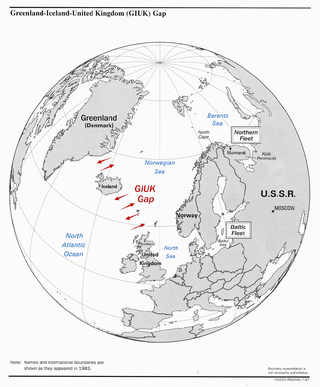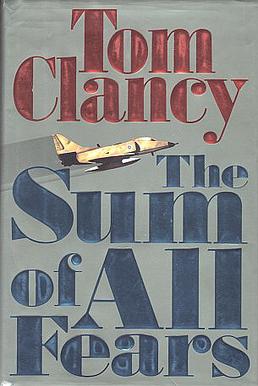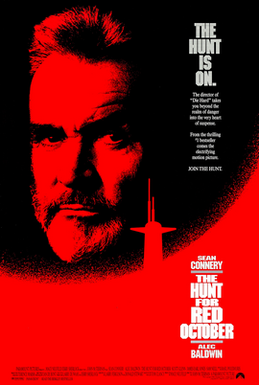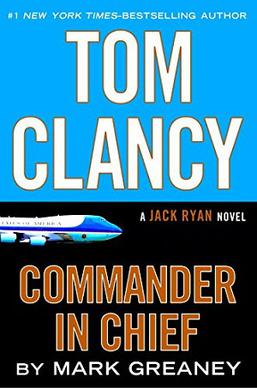
The Los Angeles class of submarines are nuclear-powered fast attack submarines (SSN) in service with the United States Navy. Also known as the 688 class after the hull number of lead vessel USS Los Angeles (SSN-688), 62 were built from 1972 to 1996, the latter 23 to an improved 688i standard. As of 2024, 24 of the Los Angeles class remain in commission—more than any other class in the world—and they account for almost half of the U.S. Navy's 50 fast attack submarines.

Thomas Leo Clancy Jr. was an American novelist. He is best known for his technically detailed espionage and military-science storylines set during and after the Cold War. Seventeen of his novels have been bestsellers and more than 100 million copies of his books have been sold. His name was also used on screenplays written by ghostwriters, nonfiction books on military subjects occasionally with co-authors, and video games. He was a part-owner of his hometown Major League Baseball team, the Baltimore Orioles, and vice-chairman of their community activities and public affairs committees.

The Cardinal of the Kremlin is an espionage thriller novel, written by Tom Clancy and released on May 20, 1988. A direct sequel to The Hunt for Red October (1984), it features CIA analyst Jack Ryan as he extracts CARDINAL, the agency's highest placed agent in the Soviet government who is being pursued by the KGB, as well as the Soviet intelligence agency's director. The novel also features the Strategic Defense Initiative (SDI), a real-life missile-defense system developed by the United States during that time, and its Russian counterpart. The book debuted at number one on the New York Times bestseller list.

Debt of Honor is a techno-thriller novel, written by Tom Clancy and released on August 17, 1994. A direct sequel to The Sum of All Fears (1991), Jack Ryan becomes the National Security Advisor when a secret cabal of Japanese industrialists seize control of their country's government and wage war on the United States. The book debuted at number one on The New York Times bestseller list. The novel was later noted as containing plot elements which were similar to the circumstances of the September 11, 2001, terrorist attacks and the hijacking of United Airlines Flight 93.

John Patrick Ryan Sr. (Hon.), nicknamed Jack, is a fictional character created by author Tom Clancy and featured in his Ryanverse novels, which have consistently topped the New York Times bestseller list over 30 years. Since Clancy's death in 2013, five other authors, Mark Greaney, Grant Blackwood, Mike Maden, Marc Cameron and Don Bentley, have continued writing new novels for the franchise and its other connecting series with the approval of the Clancy family estate.

Red Storm Rising is a war novel, written by Tom Clancy and Larry Bond, and released on August 7, 1986. Set in the mid-1980s, it features a Third World War between the North Atlantic Treaty Organization and Warsaw Pact forces, and is notable for depicting the conflict as being fought exclusively with conventional weapons, rather than escalating to the use of weapons of mass destruction or nuclear warfare. It is one of two Clancy novels, along with SSN (1996), that are not set in the Ryanverse.

The GIUK gap is an area in the northern Atlantic Ocean that forms a naval choke point. Its name is an acronym for Greenland, Iceland, and the United Kingdom, the gap being the two stretches of open ocean among these three landmasses. It separates the Norwegian Sea and the North Sea from the open Atlantic Ocean. The term is typically used in relation to military topics. The area has for some nations been considered strategically important since the beginning of the 20th century.

The Sum of All Fears is a political thriller novel, written by Tom Clancy and released on August 14, 1991, as the sequel to Clear and Present Danger (1989). Main character Jack Ryan, who is now the Deputy Director of Central Intelligence, tries to stop a crisis concerning the Middle East peace process wherein Palestinian and former East German terrorists conspire to bring the United States and Soviet Union into nuclear war. It debuted at number one on the New York Times bestseller list.

Captain 3rd Rank Valery Mikhailovich Sablin was a Soviet Navy officer and a member of the Communist Party. In November 1975, in response to rampant corruption and stagnation in the Soviet Union under Leonid Brezhnev, he led a mutiny on the Soviet anti-submarine frigate Storozhevoy in an attempt to start a Leninist political revolution. His mutiny failed and he was executed for treason nine months later.

Crimson Tide is a 1995 American submarine action thriller film directed by Tony Scott and produced by Don Simpson and Jerry Bruckheimer. It takes place during a period of political turmoil in Russia, in which ultranationalists threaten to launch nuclear missiles at the United States and Japan.

Storozhevoy was a Soviet Navy Project 1135 Burevestnik-class anti-submarine frigate. After commissioning, the Soviet Navy assigned the ship to its Baltic Fleet and based it in Baltiysk. Storozhevoy was involved in a mutiny led by Valery Sablin in November 1975, after which it was assigned to the Pacific Fleet for the remainder of its career. It was decommissioned in June 2002.

The Hunt for Red October is a 1990 American submarine spy thriller film directed by John McTiernan, produced by Mace Neufeld, and starring Sean Connery, Alec Baldwin, Scott Glenn, James Earl Jones, and Sam Neill. The film is an adaptation of Tom Clancy's 1984 bestselling novel of the same name. It is the first installment of the film series with the protagonist Jack Ryan.

Proceedings is a 96-page monthly magazine published by the U.S. Naval Institute. Launched in 1874, it is one of the oldest continuously published magazines in the United States. Proceedings covers topics concerning global security and includes articles from military professionals and civilian experts, historical essays, book reviews, full-color photography, and reader commentary. Roughly a third are written by active-duty personnel, a third by retired military, and a third by civilians. Proceedings also frequently carries feature articles by Secretaries of Defense, Secretaries of the Navy, Chairmen of the Joint Chiefs of Staff, and top leaders of the Navy, Marine Corps and Coast Guard.
The Ryanverse is a term for the political thriller media franchise created by author Tom Clancy centering on the character of Jack Ryan and the fictional universe featuring Jack and other characters, such as John Clark and Domingo Chavez.

The Jack Ryan franchise consists of American action-thriller installments, based on the fictional titular character from a series of novels written by Tom Clancy. Various actors have portrayed the role.
The following is a complete list of books published by Tom Clancy, an American author of contemporary spy fiction and military fiction.

Commander in Chief is a political thriller novel, written by Mark Greaney and released on December 1, 2015. In the book, President Jack Ryan and The Campus must stop Russian president Valeri Volodin from launching a covert violent offensive in an effort to bring back Russia as a superpower. Commander in Chief is Greaney’s third solo entry in the Jack Ryan series, which is part of the overall Tom Clancy universe. The book debuted at number two on the New York Times bestseller list.

Oath of Office is a techno-thriller novel, written by Marc Cameron and published on November 27, 2018. Set in author Tom Clancy's "Ryanverse," universe, President Jack Ryan and The Campus deal with a sinister plot behind a series of protests in Iran, dubbed the Persian Spring. Oath of Office is Cameron's second book in the Jack Ryan series. The book debuted at number eight on the New York Times bestseller list.

Code of Honor is a techno-thriller novel, written by Marc Cameron and published on November 19, 2019. It is his third book in the Jack Ryan series.
Shadow of the Dragon is a techno-thriller novel, written by Marc Cameron and published on November 12, 2020. It is his fourth book in the Jack Ryan series. The book debuted at number seven on the New York Times bestseller list.
















